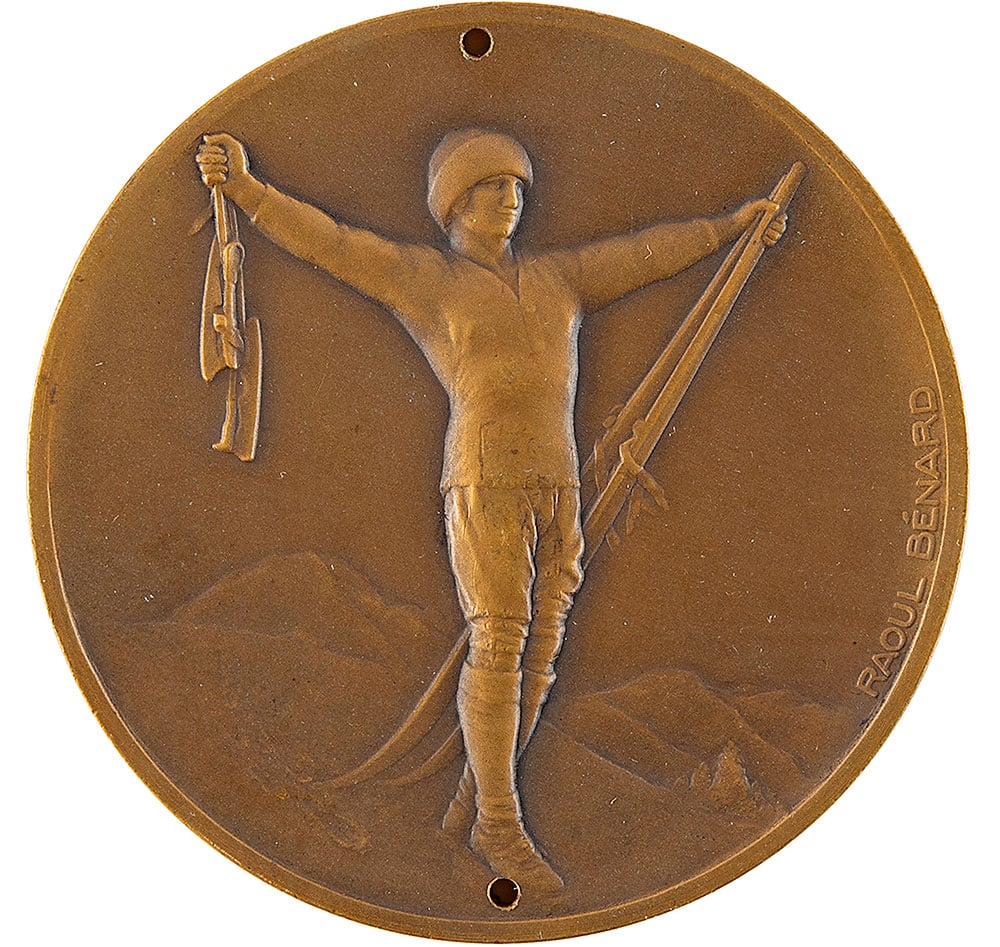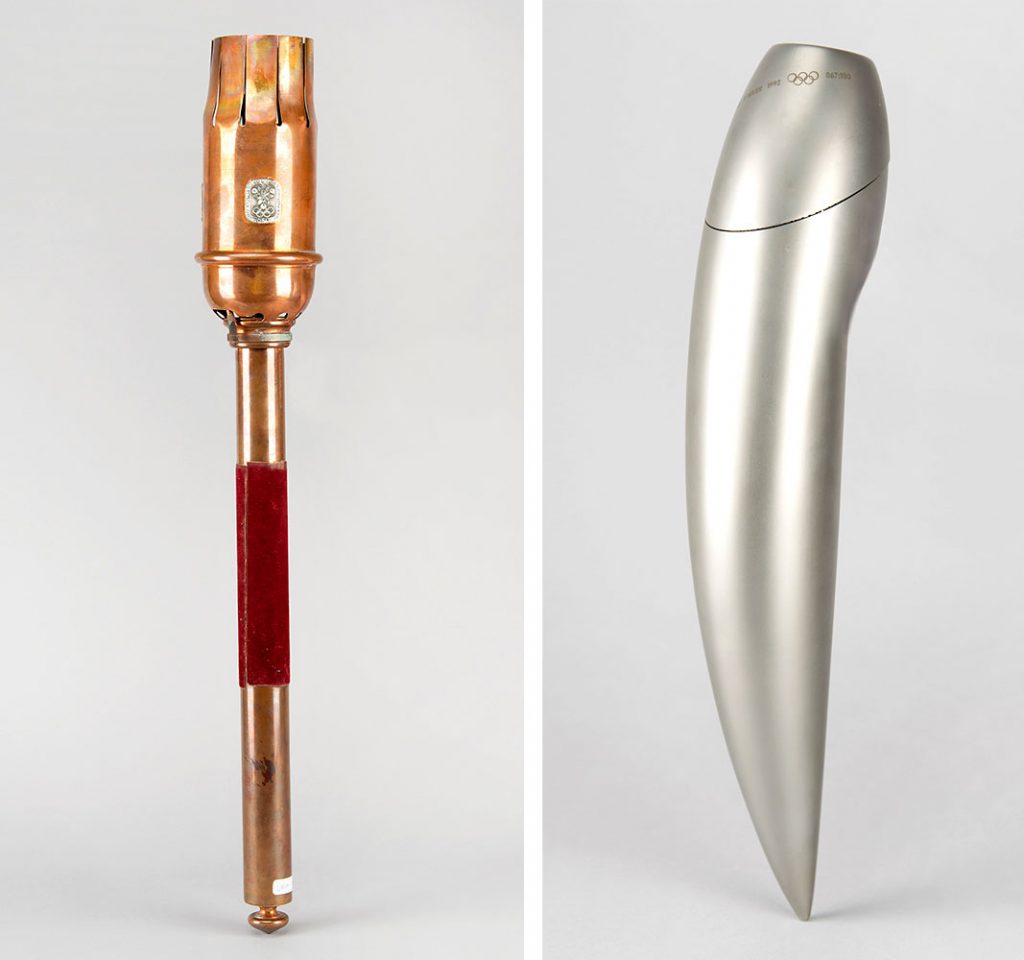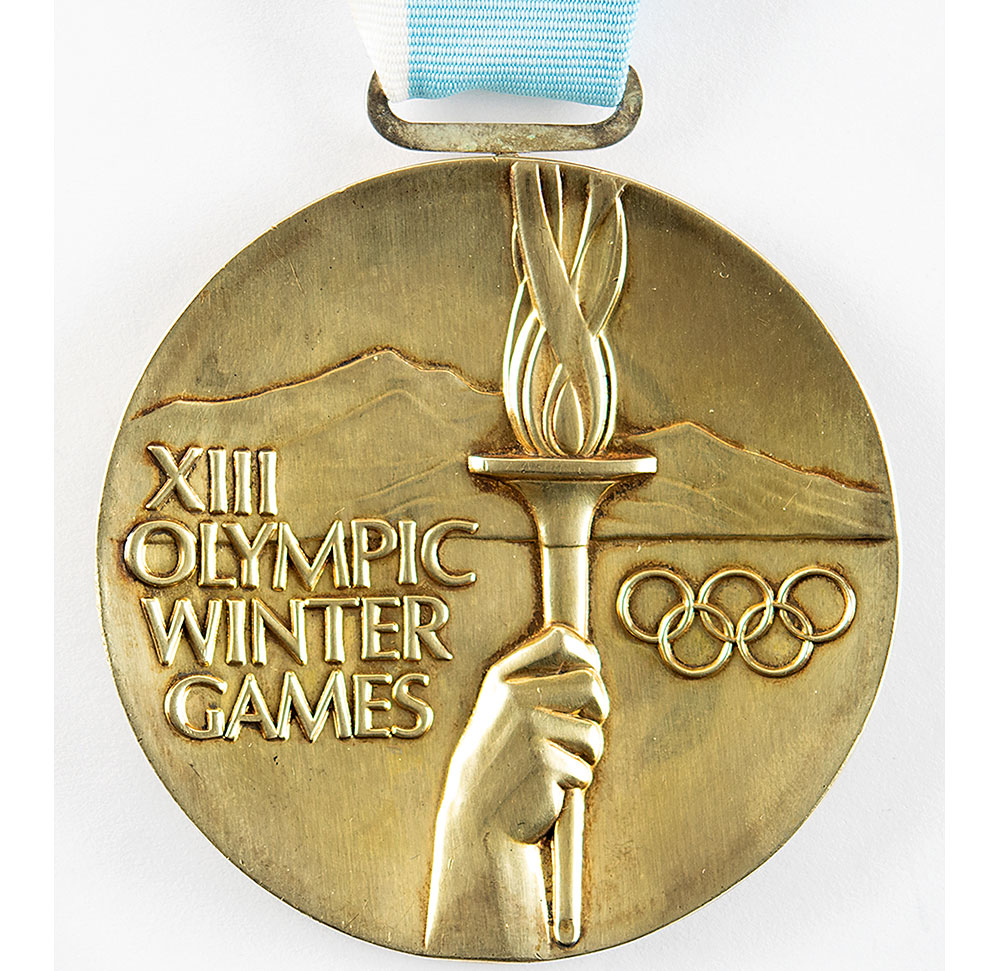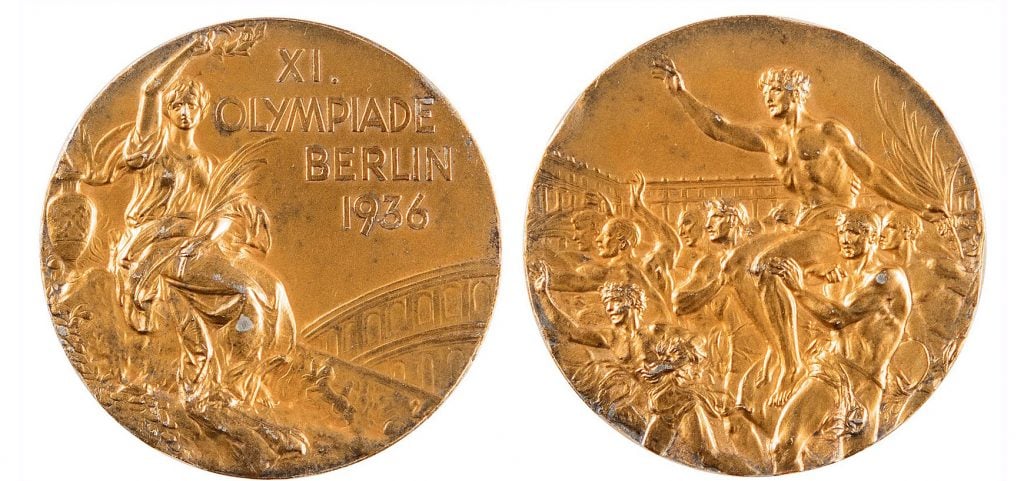The Paris Olympics should start in a year, most likely with a fully restored our Lady– but you can grab a piece of Olympic history in a massive sale of medals and memorabilia happening right now.
The sale to RR Auctions (until July 20) includes approximately 400 artifacts spanning nearly all modern Olympiads, from the inaugural games of 1896 to the recent Beijing 2022 Winter Olympics. And nnot only are winning medals on offer, but relay torches, tickets, autographs and even a stadium seat signed by all the players of the USA hockey team who emerged victorious in the legendary “Miracle on Ice” game against the Soviet Union in 1980.

Bronze medal from the Athens Olympics of 1896, the first modern Olympic Games (estimate: $40,000). Courtesy of RR Auction.
The first piece in the collection is a bronze medal awarded for the first modern Olympic Games in Athens in 1896, designed by Jules-Clément Chaplain, a sculptor and official French government medalist who helped found the Art Nouveau movement. The front depicts a relief portrait of Zeus holding Nike, the goddess of victory, in the palm of his hand, while the reverse shows a view from the Parthenon to the Acropolis. (In these early modern games, first-place winners received silver medals and second-place winners won bronze medals.) Only 150 bronze medals were minted for the 1896 Olympics, making them extremely rare.

Bronze medal at the 1924 Chamonix Winter Olympics (estimate: $13,000). Courtesy of RR Auction.
Between 1912 and 1948, the Olympic program included art competitions, as envisioned by Pierre de Coubertin, the founder of the Olympic Movement. Medals were awarded in five categories – architecture, literature, music, painting and sculpture – with the caveat that the works had to be sport-related. At the 1924 Winter Olympics in Chamonix (the first Winter Games), Raoul Bénard won in the sculpture category and had his winning design – a victorious Olympic athlete holding ice skates and skis aloft with the Alps in the background – struck and presented to the third place champions.
Interestingly, art competitions weren’t entirely new to the Olympics, as there were music, singing, and even announcing competitions in the ancient games. Coubertin believed that combining the fine arts with the Olympics would recreate their former glory. Indeed, although only 35 artists submitted works that first year, the popularity of art competitions skyrocketed by the time of the 1924 Paris Olympics and especially the 1928 Amsterdam Olympics.

Left: One of 33 relay torches used in the 1968 Grenoble Winter Olympics. Right: A relay torch used in the 1992 Winter Olympics in Albertville, France. Courtesy of RR Auction.
The most valuable item in the auction, estimated at $150,000, is a rare relay torch from the 1968 Grenoble Winter Olympics, one of only 33 made. In contrast, the 2022 Winter Olympics in Beijing used 1,200 torches. After the torch was lit in Olympia, Greece, and the 33 torches flown to Paris, more than 5,000 torchbearers carried them across the Alps to Grenoble. Crafted from an alloy of bronze and rose gold, the torch is one of the rarest and most sought-after Olympic artifacts.

Gold medalist at the 1980 Winter Olympics in Lake Placid for pair figure skating (estimate: $75,000). Courtesy of RR Auction.
Another highlight lot is a rare gold medal from the 1980 Winter Olympics in Lake Placid, made in gilded silver by Tiffany & Co. It was awarded to pair skater Alexander Zaitsev, who represented the Soviet Union with his partner Irina Rodnina. Between 1973 and 1980, the acclaimed skaters won every event they entered and remain the most decorated pairs team in the world. With its rare mintage of just 73, this gold medal is estimated at over $75,000.

“Chain of Honor” worn by members of the International Olympic Committee during the 1936 Games in Berlin (estimate: $25,000). Courtesy of RR Auction.
Since the 1936 Berlin Summer Games, the auction has included an exceptionally rare gold pantry chain worn by members of the International Olympic Committee. Designed by Walter E. Lemcke and based on ancient Greek vases and coins, it features six medallions along the chain depicting various athletes – javelin thrower, torch runner, wrestlers – with a larger medallion featuring the head of Zeus.

Gold medal of the 1936 Berlin Summer Olympics, awarded to Peter Paul Fernandes (estimate: $20,000). Courtesy of RR Auction.
Another standout from the 1936 Berlin Summer Olympics was a gold medal awarded to Peter Paul Fernandes. The Indian field hockey player has won the award – designed by Italian painter and medal designer Giuseppe Cassioli – for the crucial role he played in the victory for the British Indian team. He contributed two goals in the team’s 9–0 win over undefeated Japan, challenging Hitler’s belief in Aryan supremacy during Germany’s hosting of the Olympics.
More trending stories:
Influencers are realizing that AI may not be a magic money-making machine for artists after all
Follow Artnet News on Facebook:
Want to stay one step ahead of the art world? Subscribe to our newsletter to receive breaking news, revealing interviews and incisive reviews that move the conversation forward.
